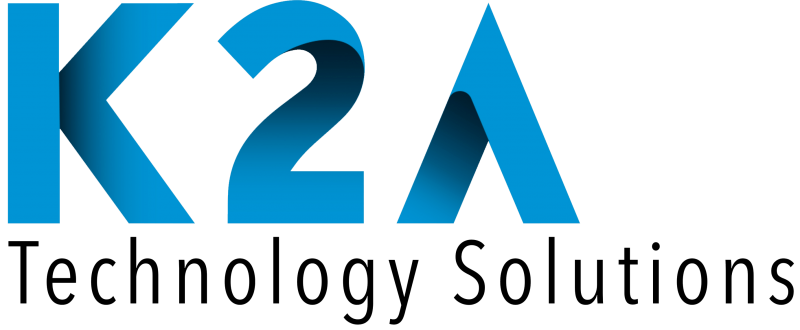Companies today need a variety of equipment, software, tools, systems, servers and other information technology items that are crucial for the development of their business activities.
The IT area plays a key role in ensuring the smooth operation of technology and the availability of the best resources to serve the different areas. Making strategic decisions, reducing costs, optimizing resources, increasing productivity and ensuring information security are some of the main responsibilities of this sector.
The IT inventory is one of the tools that help managers handle a large amount of solutions and information necessary to make correct decisions and manage the information technology infrastructure.
In this section, we offer the main considerations about Telecom and IT inventory and the benefits that this tool can offer.
What is Telecom and IT inventory?
It is a detailed list of information related to a company’s technology resources. This record is important to support decisions related to the organization’s information technology.
In order to obtain a truly efficient inventory, this list must include all the tools, add-ons, equipment, and programs, among other IT items used by the company. In order to have a complete inventory and achieve all the benefits that we will present here, it is crucial to keep records of everything, from the hardware to the software acquired by the organization, and correlate them with the users, managers, and cost centers.
Key benefits of maintaining and updating the Telecom and IT inventory
Identification of problems and correction in decision making
One of the most important reasons for having a complete and up-to-date inventory is the ability to anticipate problems and make strategic decisions.
Complete control of assets can identify points that require adjustments before problems or shortages occur. In this way, it will be possible to act in advance to prevent service unavailability from resulting in loss of productivity and profits.
The management of Telecom and IT resources through the inventory allows the identification of the best moments to carry out preventive revisions or even corrective maintenance at the initial stage of the problems, before more serious consequences happen.
These measures have a direct and positive impact on increasing the useful life of the equipment, avoiding extra expenses with the purchase of new devices before the ideal moment.
Visibility of the entire device fleet
One of the main challenges for companies consists of controlling all physical equipment. These are high-cost assets that easily fail to have adequate control, particularly mobile devices such as laptops, smartphones, tablets, and modems.
The lack of control in some cases is so great that an employee may leave the company and take the device with them or even lose it while still employed and simply ask for a new one, without considering that the equipment has software licenses or SIM cards that also incur associated costs, due to lack of internal policies and management.
Having mapped the type, model, brand, warranty and who uses each device is paramount, as well as predicting the depreciation of these assets and maintenance for the coming years.
Control of deadlines and guarantees
The inventory also assists in the management of support and warranty terms for each of the company’s software and hardware, as well as controlling employee use of assets.
For warranty and support, the company does not risk losing its rights with suppliers and is able to negotiate warranty terms or upgrade assets before the end of the coverage term.
As for the control of use, the manager can identify situations that may cause problems due to incorrect use by the user, making it possible to take measures to prevent the error from recurring, such as carrying out training or adopting new tools.
Finally, it is important to ensure that the company has a clear policy for equipment breakdowns and losses.
Mapping of IT needs
The inventory makes it possible to identify whether the Telecom and IT resources meet the company’s needs. If your organization does not know, for example, if there is a lack or a surplus of assets to carry out activities, the inventory is a great tool to provide visibility and avoid loss of productivity and unnecessary costs.
With a complete and up-to-date inventory, the manager can make informed and correct decisions, focusing on the best solution at the lowest cost and ensuring that all internal customers have the key tools to carry out their work. This makes it possible, for example, to avoid the purchase of licenses or programs that are unnecessary or incompatible with a certain area or position.
What should an efficient inventory contain?
It is important to register in the inventory the amount of equipment and systems, purchase dates, technical data, serial numbers, locations where they are installed, dates of last maintenance and updates, related cost center, users, and managers, among other data. Each business item must be recorded separately in the inventory.
For an inventory to be organized and efficient, it is essential to divide assets into categories and subcategories. Let us examine, for example, the categories of software, hardware, and users.
The hardware category encompasses physical devices, including computers, laptops, smartphones, printers, time clocks, cameras, biometric equipment, routers, modems, and servers, among others.
The category covers intangible technology resources. As an example, we can highlight applications, software licenses, and cloud services.
The users category includes those who use the IT infrastructure and must contain information related to the resources they use and may even HR information.
When to inventory Telecom and IT assets?
The inventory must be continuously updated to ensure reliable information.
If the inventory has not yet been created, the best time to do so is as soon as possible. For companies of any size, segment or amount of software and hardware used, the inventory will be a great ally of IT management.
Already in the first survey and registration of resources, several points for improvement and attention will be found, related to unnecessary costs, lack, surplus, or inadequate resources for their purpose.
Therefore, the first step is to understand the whole scenario, map each action to be taken, and decide which interventions will be necessary to solve the problems. When the corrective actions are completed, it will be necessary to keep the inventory up to date, continuously analyze it, and know when new actions will be necessary, making this cycle a routine.
What are the best practices for inventory management?
Entering all data
It is crucial to have a system that is available to enter data manually where necessary and which is structured for the demands of Telecom and IT.
It is important to look for a tool that includes all the important data for controlling the each company’s inventory, as it can vary from one organization to another. Systems that allow for this customization are ideal.
Automated control
An automated tool minimizes the possibility of errors and incorrect data entry, facilitates the visualization of the entire technology park, and speeds up decision-making, while reducing common problems when control is carried out manually.
Investing in automatic systems and routines to update and monitor Telecom and IT inventory is certainly a good practice. This initiative is even more important in more complex management structures that have a large number of assets, different departments, or third parties that use the company’s systems and devices.
Creating custom reports
One of the most important goals of the Telecom and IT inventory is to provide the necessary information to support decision making.
Being able to generate customized reports based on different data and criteria allows for more accurate decisions that are focused on optimizing resources and reducing costs. It is possible to find out, for example, which software will need to have its licenses renewed by the end of the year and forecast the necessary investments for this purpose or even increase or refresh the number of devices.
Focus on important information
The large volume of data on Telecom and IT assets may lead to confusion and a lack of focus as to what really matters for efficient management.
When deploying the inventory, even before its first upload, it is important to define which data are relevant and, above all, which ones should be analyzed. Knowing what information is needed for the foundation of your business strategy allows you to prepare specific reports for what you want to analyze and to support the decisions to be taken.
Incoming and outgoing assets
The main cause of inventory inconsistencies is the entry and exit of assets without recording or updating. To avoid this problem, a well-defined process is needed that changes inventory data only when an asset effectively becomes or ceases to be part of the company or has internal movement – for example, between cost centers.
To be an efficient tool, the inventory needs to be controlled and updated. After all, information must be reliable so that the decisions the right decisions are made.
Engaged team and internal customers
The manager should ideally involve the team in the processes so that the respective goals are achieved. Both deployment and inventory maintenance benefit from this practice.
One good practice is the creation of actions or conversations so that everyone understands the importance of the Telecom and IT inventory, as well as the benefits that the tool can bring to the company’s processes. In this way, engagement and results will be greater.
Training that enables the Telecom and IT team to fully utilize the tools and learn about the processes adopted is also fundamental.
How to monitor the inventory?
The best monitoring option is an IT management software solution. This type of system performs automatic updating and monitoring continuously, with virtually zero chances of error, unlike what happens in manual systems such as spreadsheets.
A single software platform is capable of managing all of the company’s IT assets, from inventory maintenance to contract monitoring, and control of mobile, fixed and data link expenses, among others. A well-developed, updated and monitored IT inventory provides crucial information for the manager to make correct decisions, being responsible for significant cost reduction percentages.


